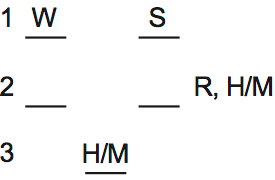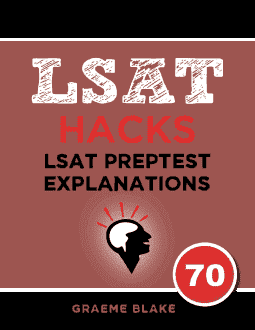This question appears similar to question 14. It looks like a rule based “acceptable order” question.
Unfortunately, I went through every rule and none of them seemed to directly eliminate any answers.
When you’re stuck, you should consider the most restricted variables. In this game, the horror film and the mystery film are quite restricted, as rule 4 says they can’t go together.
Notice that answers A-D all include one of the horror and mystery films. So they automatically fulfill our toughest rule.
E does not have either the horror or the mystery film, so let’s start there.
The western and the sci-fi film fill group one, and one of H/M fill group 3:

So the romance film and the other H/M go in group 2. But this doesn’t work: rule 3 says that the romance film can’t go in group 2.
E is CORRECT.
This is a hard question, but it fits a pattern. If a question seems impossible, look for what’s not included in the answer choices. The LSAC knows that people aren’t very good at imagining things that aren’t listed, so they’re pretty predictable at using this trick to make hard questions.


I actually noticed an interesting trick that made it surprisingly easy to solve this otherwise challenging question – for the first diagram listed in #15, western and sci-fi movies can’t be shown on screen 1, since the romance film can’t go in group 2, so it would have to fill group 3, thereby leaving the mystery and horror films to go in group 2 (which would violate rule 4). Because I had already created two diagrams for #15, I was quickly able to eliminate answer choice (E) for this question. Although this strategy doesn’t always work, it can be helpful to glance at diagrams in previous questions just to eliminate (or, in this case, choose) answers offered in the prompt.